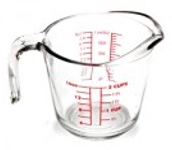
In these uncertain times, you’re probably asking (or being asked) questions like: What will the business look like for the rest of the year? Will it get back to normal and, if so, when? Will there be a “new normal” and what will that look like? Of course, there is no one right answer to those questions, especially one fitting all categories and brands, but, in this post, I’ll make suggestions on how to think about those tough questions. I’ll use a framework based on the cornerstone of syndicated data organization: the four dimensions. If this is an unfamiliar concept or you need a refresher on the four dimensions, read this classic post.
Throughout this post, I will assume that sales of product Brand X are up +30% vs. the same period last year.

Product
Look beyond your brand: It is always a good idea to track category and competitive sales along with your own and that is especially true now! Brand X’s sales increase of +30% would be good news if the category is only up +20%, but it’s disappointing if category sales are up +50%. Don’t forget that retailers will be looking at this data, too, next time they adjust their assortment of items and even brands.
Think beyond your usual category or aisle: People are definitely eating more home-cooked, or at least home-prepared, meals right now. Food items that previously made up a more limited repertoire of school or work lunches, for example, are now competing with more “elaborate” dishes. There has been a large increase in sales of meat and produce that is not likely to be sustained at the elevated levels we are seeing now. And there has been a return to comfort foods, which could now be competing with your more health-focused category or brand. And what about out-of-stocks? For example, if a shopper wants to buy canned soup but there is none on the shelf they may buy frozen soup instead.
Drill into package sizes: See if sales increases are equally coming from products of different sizes. Sales are up for large size packages as many shoppers stock up on products on fewer trips to the store. But…there is a segment of the population that has very limited income, and can only afford to buy smaller sizes right now.
Think about consumer dynamics: This depend a lot on the consumers your brand serves. Almost every product category is expanding within retail channels because people are now at home and staying there versus at work or school or in a restaurant or bar. But how long might that endure will depend on whether the pandemic is increasing total demand for your product (disinfecting wipes) or encouraging stock-up behavior that might take a while to work through the system (giant bottles of vanilla extract).

Market
Think about channels: The biggest thing here is to make sure you are looking at sales from all available retail channels. There has been a huge increase in people ordering groceries online, for delivery or for pick-up (“click and collect”). For many online shoppers this is their first time doing that and their experience is likely to influence how often (if ever) they will get groceries online once they have many safe and other viable options again. There has also been an increase in sales of staple products at convenience stores as some products have been out-of-stock in the Grocery channel. Click here for a look at total store channel performance provided by Numerator. Although this is not product-specific, you can compare your brand’s sales trends by channel with each channel overall.
Consider in-home vs. out-of-home: Is some portion of Brand X’s 30% growth happening because it’s a product that is usually purchased for out-of-home usage or consumption? Good examples of this are alcoholic beverages. With all the virtual happy hours happening online now, participants need the drinks at home to fuel those. When we can once again gather for real-life, in-person happy hours off-premise alcohol sales will probably decline.

Period
Be very specific when sharing data: In my example, “Brand X sales are up +30%.” A good analyst will probably be wondering what the length of the period is – the most recent week, most recent 4 weeks, most recent 12 weeks, since the federal government declared a national emergency or some other period? It is important to indicate the period, both the duration and end date, along with any data that you are sharing with others. Given how quickly things are changing right now, you really need to be specific (for example, “4 weeks ending 4/4/20”). Also keep this in mind when seeing articles, posts etc. that have sales trends – I’ve been seeing data online that is almost a month old, which is before many states even issued stay-at-home orders.
Look at both aggregate and trended data: Make sure that you are looking at business performance in a way that allows you to accurately assess what is really happening. If possible, look at the data on a trended weekly basis. That will allow you to see if the growth of +30% is consistent across the period, is accelerating or slowing down. It will also help determine the best “starting week” for the current situation. The start week varies a lot by category and, to a lesser extent, by region.
Use multiple comparison periods: Another question a good analyst should have is “Brand X sales are up +30% vs. the same period last year, but…how does that growth rate compare to what was happening before the pandemic?” If Brand X is a new brand that was up +40% vs. year ago before the pandemic, then the growth of +30% is actually something to be concerned about.
 Fact/Measure
Fact/Measure
Look at dollar sales and physical volume: One more question a good analyst will have about Brand X sales being up +30% – is that dollar sales or units or equivalized units? Most publicly reported data is in dollars, since that is the only way to compare across categories. If you have access to units, or even better equivalized units, look at that, too. Pricing have risen a bit over the last several weeks so dollar sales would go up even if the same physical amount of product is sold. Higher prices can be attributed to general inflation but also many retailers and manufacturers have been pulling back on trade promotions in order to smooth out demand, which helps the stressed-out supply chain right now.
Look at velocity, too: We’ve all seem some empty shelves in stores recently. What if Brand X grew +30% but…shoppers in 3 states couldn’t even buy the product due to out-of-stocks? Growth would have been even higher, if Brand X had been available everywhere. Retailers will also be looking at velocities (in addition to sales) when it comes to optimizing their assortment and resetting shelves in a few months. We get lots of questions on velocity, so read all about it here!
Consider purchase dynamics: An analyst working on Brand X should look at panel data, in addition to POS data. Panel data would enable them to understand why sales are up +30%: is it because more people are buying the product now or because regular buyers are increasing their purchases or some combination of both of those? Tracking penetration and buy rate over time will help determine when product sales have likely settled in at a “new normal” level.
Do you have other questions about doing analysis during or after the coronavirus pandemic? Ask them in the Comments below and we will try to answer, as best we can. Stay safe, everyone!

Great Stuff! – And thank you for the mention and kudos!